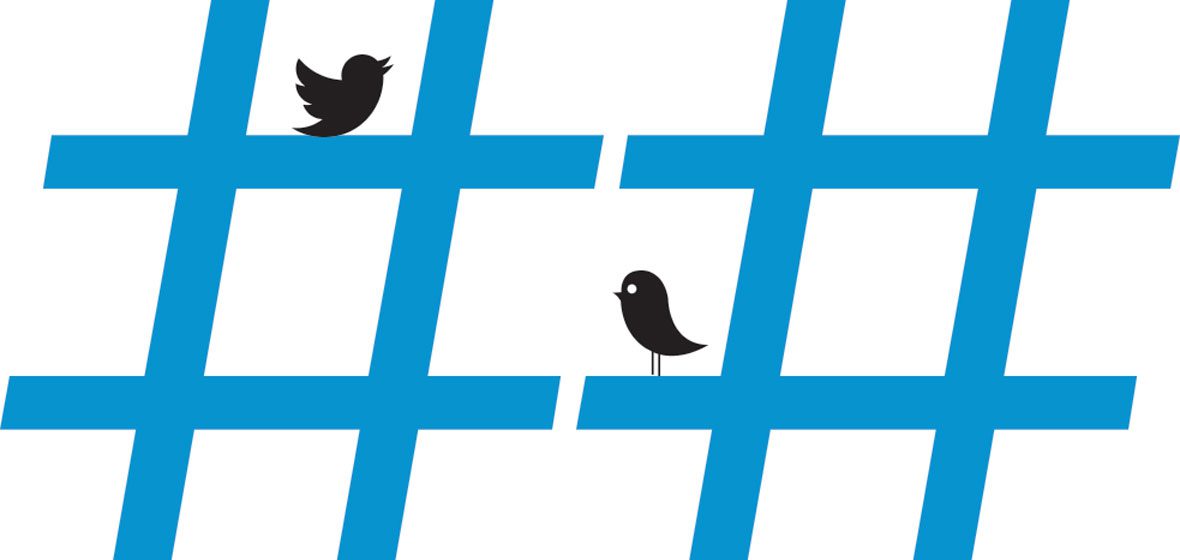The power of social media is drawing in courts, judges and law firms, whether it is to recruit staff or to inform and educate the public. And it’s helping shake up the stereotypes of an aloof and conservative profession.
Two years ago Alysia Blackham and Professor George Williams were presenting their work on social media to a public law conference at the University of Cambridge. The talk included examples of how members of the US judiciary were increasingly using Twitter, particularly in states where judges were elected. As is increasingly common, Blackham’s remarks were being “live tweeted”. It wasn’t long before she was able to show the audience a striking example of social media’s potent immediacy and reach.
“During our talk, we mentioned a certain judge [Judge Stephen Dillard] in the United States, who was using Twitter to increase his public profile,” says Blackham, a senior lecturer at Melbourne Law School. “Within minutes, he had ‘favourited’ and retweeted the live comment that had been posted on Twitter.” He also added his position to the retweet: “Vice Chief Judge, Court of Appeals of Georgia.”
It is almost unimaginable that any judge in Australia would let their thumbs do the talking, although many commentators think a number of judges tweet anonymously. Research by Blackham and Williams on social media and the law in Australia has turned up just one Australian judge who tweets in his own name, Justice Lex Lasry.
While many in the legal community may be left slack-jawed at Judge Dillard’s level of social media commitment, it does raise questions about the profession’s approach to new technology platforms.
The Australian judicial system is still grappling with social media, reflected in its uneven uptake by courts and tribunals. Blackham and Williams wrote in a public law paper published last year, that only six courts in Australia, including the Supreme Court of Victoria, had a social media presence while the judicial systems of two states had a collective presence.
However, the use of social media in the broader legal profession is becoming the norm. Legal firms use it for everything from recruiting to promoting staff commentary. Many firms are using LinkedIn as an alternative media and content platform. They also use Facebook and Twitter, and increasingly tweet about areas such as family law. Courts have long been grappling with what to do about jurors using social media and counsel tweeting proceedings. In the future, Williams notes, new judges will come with extensive social media footprints.
Williams, the dean and Anthony Mason Professor at UNSW’s Faculty of Law, believes social media usage in the legal profession and the judiciary lags that of much of the population, particularly younger people.
“I think a lot of people in the law have hoped to ignore it,” he says. “They put it to one side and that explains some of the uneven uptake.” But, he says, people are coming to an understanding that it’s here to stay and it will have an effect on the work of lawyers and the courts.
The Supreme Court of Victoria has been a leader, both nationally and internationally, in social media engagement. In 2011, Anne Stanford, the court’s strategic communications manager, set up a Twitter account to monitor the tweets of court reporters. “Soon we saw the opportunity it presented,” she recalls. “It was a way of reaching an entirely different market, as well as the traditional market, but more immediately.”
Within six months, the court had formalised the account. A year later, the court was using Twitter to alert the public to live streaming of high-profile cases, including the sentencing of convicted drug trafficker Tony Mokbel. The information reached 37,000 people in little over an hour.
Last year, the court’s social media feeds attracted an international audience for the arbitration case brought by Formula 1 driver Giedo van der Garde a week before the Melbourne Grand Prix. Stanford says links, including to the live streaming of the televised judgment, were posted on Twitter. “It was the only way to reach the outside world and it was just phenomenal.”
Stanford says the social media feeds have been a vital part of the court’s communication policy. And not just for high-profile cases, but also for informing the community about recent judgments or events such as the court’s 175th anniversary.
“It’s important that the community, no matter what age or generation, is aware of the goings-on in the courts,” she says. “The courts are open and transparent but not everyone can be sitting in court listening to what’s happening. Having a presence is an acknowledgement and recognition that social media is just another conduit to the community.”
Stanford says the court takes a practical view about the risks associated with using social media. “We trust staff with emails and phone conversations,” she says. “And social media is just another phase of office communication. People are still scared of Twitter … but you have to move past that. It’s just another form of communication that you should handle in the same manner as if somebody had rung or emailed you.”
The court is about to open accounts on Instagram, which appeals to the younger generation, and LinkedIn. It will use LinkedIn to post longer stories about the Commercial Court that aren’t appropriate for Facebook, Stanford says.
In 2013, the Supreme Court of NSW set up a Twitter account and, in 2014, it established a Facebook page. A court spokesperson says one aim of setting up the accounts was to “engage with the public and promote better community understanding of the court”.
The spokesperson says the page appeals most to law students, who enjoy commenting on and sharing posts. One recent post was viewed by more than 35,000 people.
So while reaching a broader audience is a clear advantage, what does success in the social media space mean for courts and tribunals? Blackham says some courts and tribunals may define success as being able to use it without experiencing “blow-ups” or bad publicity.
But she believes a broader view is needed. “Ultimately it’s about connecting with a new audience, enhancing court and tribunal communication and promoting accessibility and open justice,” Blackham says.
Williams adds that there are also opportunity costs if courts and tribunals avoid being on social media.
“Not engaging comes with a different set of dangers,” he says. “Courts are already being talked about on social media and you’re seeing sometimes fake court pages being set up, for example. So if courts aren’t engaged, then they can expect that they’ll be talked about, they’ll be represented in ways that may be very harmful and I think it’s a mistake to let that sort of content go unchallenged.”
The media is shrinking and standards in court reporting by traditional media outlets, including newspapers, are declining, Williams says. “That mixed with a great willingness of politicians to robustly prosecute the law and order debate causes big problems for courts,” he says. “Social media offers a direct channel between courts and the public that we haven’t had before. It offers a powerful new avenue to shape public understandings of what courts do and to get accurate messages out about
that role.”
Social media, then, is a key tool in demystifying court processes.
“Courts can be very scary places” says Kate Eastman SC, a barrister, teacher and mediator. “But if people use social media to get information – about where the court is, what a courtroom looks like, whether childcare is available, how to use the registry or how to address a judge – it is a valuable resource. Social media can facilitate access to justice.”
Since the NSW Civil and Administrative Tribunal (NCAT) was established on 1 January, 2014, it has been using social media to educate and inform people about its services and resources. NCAT is also engaging offline with people who post adverse remarks on its social media feeds. It takes down the comments and directs the person to more appropriate channels for complaint.
Many courts and tribunals see two-way engagement as very challenging. It consumes time and resources, and unanticipated situations can quickly develop. The Supreme Court of NSW uses social media feeds as a virtual information service only. “A one-way transmission of information has been preferred to avoid inappropriate or abusive responses,” says a spokesperson. “However, we could be open to an event such as the ‘Twitter Town Hall’ day in the future.”
A Twitter Town Hall day is something the British Columbia Provincial Court in Canada undertook in April this year. It used the hashtag #AskChiefJudge during its Law Week to encourage the public to send in questions for Chief Judge Thomas Crabtree. It was a first in Canada, and possibly it was a world-first.
Twitter is a way lawyers can connect with the community and be more accessible.
KATE EASTMAN SC
During the two-hour event, the court replied to 100 questions that members of the public sent via Twitter, with many answers linking to legal articles and research. Some questions that hadn’t been answered during the event were subsequently dealt with on the court’s website. The Chief Judge also tweeted a selfie.
Still, the humanising of judges and court processes is a contested space. “It reduces the detachment that courts have traditionally relied on to give them legitimacy and authority to their decision-making,” Blackham says.
“It’s a move from old-school judging to a more open, transparent process, recognising that judges are human beings and encouraging them to engage in that manner. I think there is a strong core of the judiciary that finds that threatening. And I can understand why because it’s a very different role and is a much more public way of judging.”
Nick Clark, Chief Executive Officer of the Rule of Law Institute of Australia, says courts shouldn’t worry about “humanising” judges, and should instead focus on providing access to court and tribunal content.
“It may be useful to note the obvious: judges are public officials exercising power as judges, not in their personal capacity,” Clark says.
He also says courts and tribunals should have “output-only” social media accounts, as part of their responsibility to be accessible and open to the public. He says it is also important to help the public understand how courts work, demonstrating that the rule of law is not just a lofty idea but exists in practice.
Eastman believes the inherently democratic nature of social media is another reason it is causing alarm in the legal profession. “The legal profession is hierarchical … a forum like Twitter cuts across the hierarchical structures. Twitter creates connections and communities that are not based on hierarchy or seniority,” she says.
However, in much the same way Twitter can help courts and tribunals find a new audience, Eastman thinks it can do the same for lawyers. It can help them “loosen up” and shake the stereotype of being aloof and conservative. “Twitter is a way lawyers can connect with the community and be more accessible,” she says.
Eastman is a keen Twitter user. “I see it as a really valuable professional tool, as valuable as my telephone in a way,” she says. She follows the Twitter feeds of local Australian courts, the US Supreme Court and courts in Canada, Hong Kong, South Africa and the UK, as well as all the international courts and tribunals. “It’s vital for accessing information quickly. I can know about a decision of a court in the UK or US that might be relevant to my work within minutes of the decision being handed down. Or if there’s an overseas conference, I can follow the tweets of the conference participants and follow the conference proceedings without the cost and time of attending in person.”
She also sees Twitter as a way of sharing information with other people, such as her university students, who may be interested in an issue but who may not have the same level of expertise or experience in researching international law. Eastman also believes that the risks for the next generation of lawyers entering the senior ranks of the profession are overplayed.
“I think that over time people will be able to clearly separate out what they know about people from their online presence [personal and professional] and what they expect in a professional environment,” she says. “I think the next generations will have a very different view of what’s acceptable and what’s not to post online. In fact, I think that in the future, the absence of an online presence will be more concerning than having an online presence.”
To this end, Williams and Blackham are considering a large project that will survey how people are using social media in the judiciary. “From that base, we hope to be answering questions of how should it properly be used in the future and how should we answer some of the big questions about where we should draw the line,” Williams says. “Because our view is that while there are benefits, we do need caution and any use of social media must reflect the status and authority that we need the courts to have in our society.”
A firm’s perspective on social media
In 1998, Allens launched its first website, which became a core part of the firm’s online presence. A decade later, it started using Twitter, LinkedIn and Facebook.
“Social media allows people to digest information on the go – on the train, bus or ferry,” says Allens chief marketing officer Julie Barber. “It’s important to have a presence on Twitter, Facebook and LinkedIn as they are the platforms we feel are the most important and powerful for our clients and stakeholders.”
Allens tailors content according to the platform’s audience. Its research found that about 60 per cent of ASX general counsels have LinkedIn profiles, and it’s the dominant channel for professional networks, information and content.
“LinkedIn is an effective platform for our people to share thought leadership and to network directly with clients,” Barber says.
The lines are more blurred with Facebook, which draws more personal users, so Allens tends to use it for recruiting only.
Twitter is different again. “We find that people use it more as a curated headline service. It’s quicker and more about breaking news,” Barber says. “We find Twitter also represents a great way of connecting with a lot of our pro bono and community clients. For them, it’s a free, easy-to-use tool those community organisations have embraced.”
Barber says lawyers are naturally cautious and understand they need to use their judgment.
“It’s not the case that we’re having to pull people back from controversial comments,” she says. “In fact, it’s quite the opposite – they need to be told that the firm is pleased they are using social media to engage clients.




